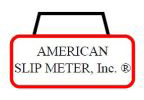Top Five Global Robotics Trends |
|
| Contributed by BSM Staff | |
FRANKFURT -- The global market value of industrial robot installations has reached an all-time high of U.S. $ 16.5 billion, and future demand will be driven by a number of technological innovations, market forces and new fields of business. The International Federation of Robotics lists the following top five trends for the robotics industry in 2025: The trend towards artificial intelligence in robotics is growing. By leveraging diverse AI technologies, robotics can perform a wide range of tasks more efficiently, including: Analytical AI enables robots to process and analyze large amounts of data collected by their sensors. This helps to manage variability and unpredictability in the external environment, in high mix/low-volume’ production as well as in public environments. Robots equipped with vision systems, for example, analyze past tasks to identify patterns and optimize their operations for greater accuracy and speed. Robot and chip manufacturers are investing in the development of dedicated hardware and software that simulate real-world environments. This so-called Physical AI allows robots to train themselves in virtual environments and operate by experience, rather than programming. These Generative AI projects aim to create a “ChatGPT moment” for Physical AI. This AI-driven robotics simulation technology will advance in traditional industrial environments as well as in service robotics applications. 2 – Humanoids: Yet, industrial manufacturers are focusing on humanoids performing single-purpose tasks only. Most of these projects are being carried out in the automotive industry, which has played a key role in pioneering robot applications throughout the history of industrial robotics, as well as in the warehousing sector. 3 – Sustainability – Energy Efficiency: In general, their ability to perform tasks with high precision reduces material waste and improves the output-input ratio of a manufacturing process. These automated systems ensure consistent quality which is essential for products designed to have long lifespans and minimal maintenance. In the production of green energy technologies such as solar panels, batteries for electric cars or recycling equipment, robots are critical to cost-effective production. They enable manufacturers to rapidly scale up production to meet growing demand without compromising quality or sustainability. At the same time, robot technology is being improved to make the robots themselves more energy-efficient. For example, the lightweight construction of moving robot components reduces their energy consumption. Different levels of sleep mode put the hardware in a saving energy parking position. Advances in gripper technology use bionics to achieve high grip strength with almost no energy consumption. 4 – Robots - New Fields of Business: Robot-as-a-Service (RaaS) business models allow enterprises to benefit from robotic automation with no fixed capital involved. RaaS providers specializing in specific industries or applications can offer sophisticated solutions quickly. In addition, low-cost robotics offers solutions for potential customers that find a high-performance robot to be oversized for their needs. Many applications have low requirements in terms of precision, payload, and service life. Low-cost robotics addresses this new “good enough” segment. Interesting new customer segments beyond manufacturing include construction, laboratory automation and warehousing. Demand across all industries is being driven by the fact that recent crises have led to political awareness of domestic production capacity in strategically important branches. Automation allows manufacturers to nearshore production without sacrificing cost efficiency. 5 – Robots Addressing Labor Shortage: The use of robotics significantly reduces the impact of labor shortages in manufacturing. By automating dirty, dull, dangerous or delicate tasks, human workers can focus on more interesting and higher-value tasks. Robots perform tedious tasks such as visual quality inspection, hazardous painting or heavy lifting. Technological innovations in robotics such as ease of use, collaborative robots or mobile manipulators help to fill gaps when and where needed. The International Federation of Robotics is the voice of the global robotics industry. It represents national robot associations, academia, and manufacturers of industrial and service robots from over twenty countries. For more, go to www.ifr.org. |
|






